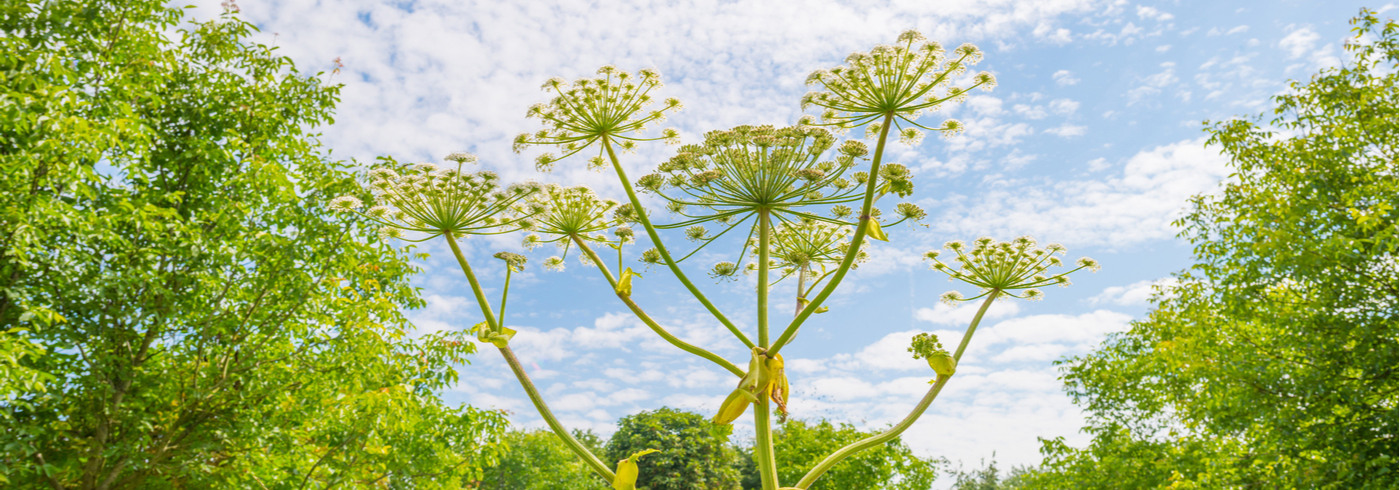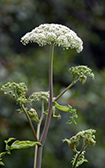
Harmful Plants
Watch our public health inspector discuss harmful plants and how to protect yourself.
Giant hogweed
Giant hogweed is a harmful plant. Touching the plant's sap can cause skin rashes, burns and blisters.
|
What does it look like? |
|
The plant can grow from four to six metres tall (15 to 20 feet). 
The plant has:
|
|
How can giant hogweed hurt you? |
|
If you see giant hogweed, do not touch it. The plant makes a clear, watery sap that is found in the leaf and stem hairs. The sap in the plant may cause a reaction in the sun. It can cause blisters, burns and black and purple scars. If the sap touches the eye, it can cause temporary or permanent blindness. |
|
What if I touch it? |
If the plant sap touches your skin or eyes:
|
|
What should you do if you find it? |
|
Do not touch the plant. If the plant is on your property, hire a lawn professional to remove the plant. If you see the plant in a public space such as a park or on the side of the road, contact the Regional Weed Inspector with the location and description of the giant hogweed. If possible, please attach a photo. |
Wild parsnip
Wild parsnip is a harmful plant. Touching it and going into the sun can cause skin burns and blisters.
|
What does it look like? |
|
|
How can wild parsnip hurt you? |
|
If you see wild parsnip, do not touch it. The plant produces sap that may cause a skin irritation when exposed to the sun. The reaction can include rashes, blisters, or burns. If the sap touches the eye, it can cause temporary or permanent blindness. |
|
What if I touch it? |
If the plant sap touches your skin or eyes:
|
|
What to do, if you find it? |
|
Do not touch the plant. If the plant is on your property, hire a lawn professional to remove the plant. If you see the plant in a public space such as a park or on the side of the road, contact the Regional Weed Inspector with the location and description of the wild parsnip. If possible, please attach a photo. |
Additional resources
Contact Us





 The plant has a yellow flower.
The plant has a yellow flower.